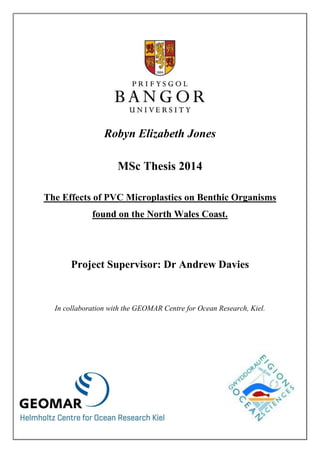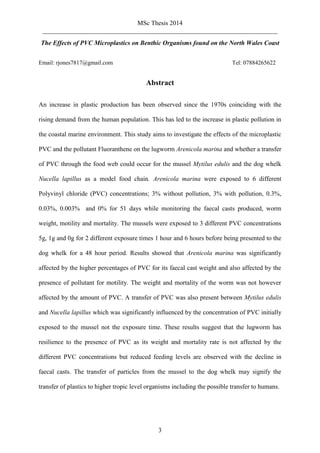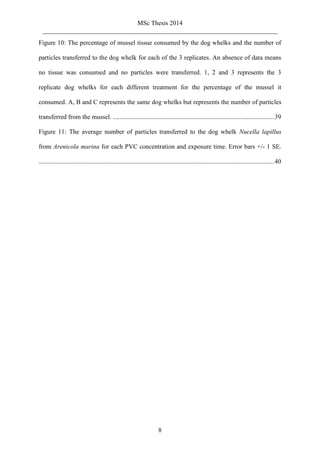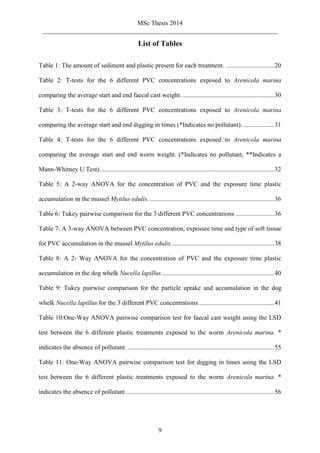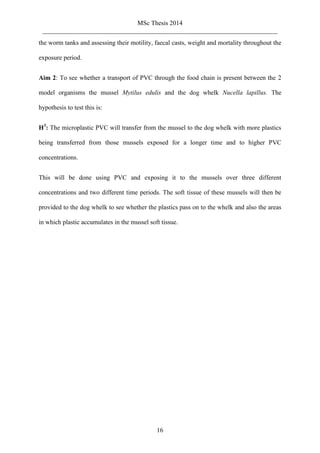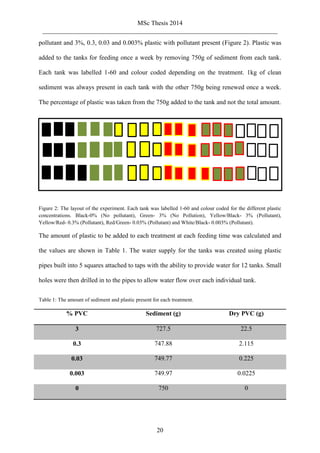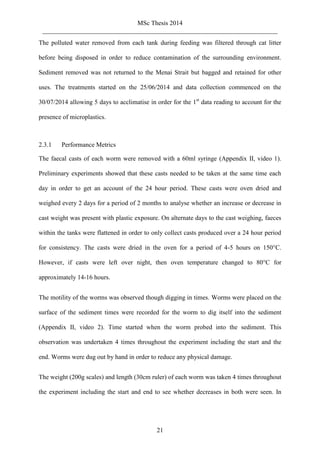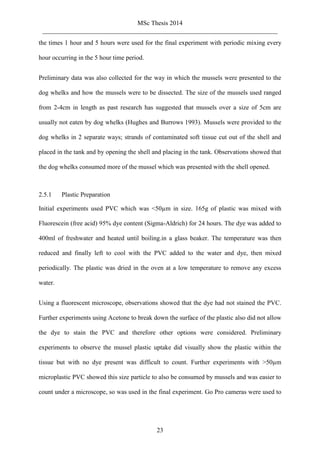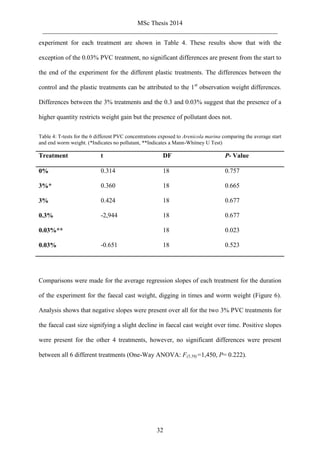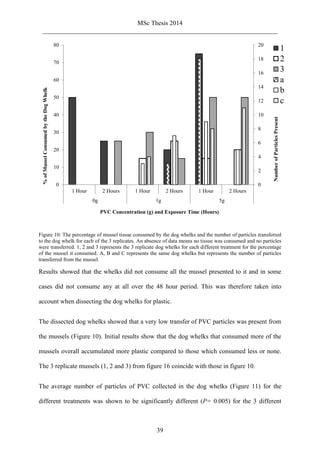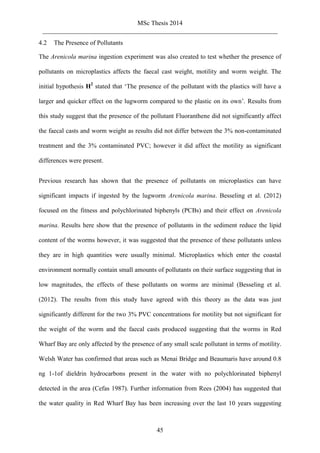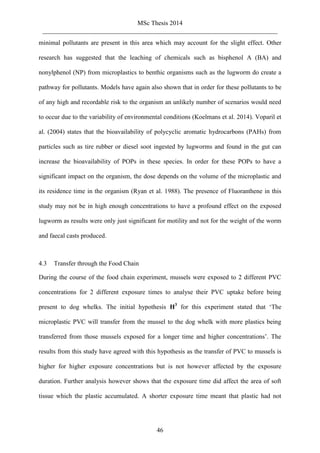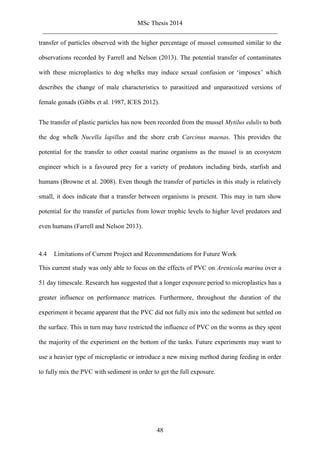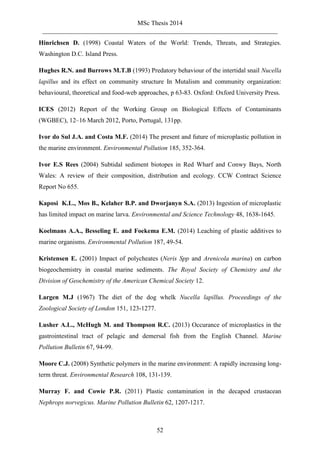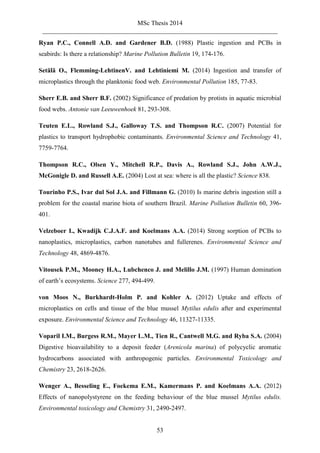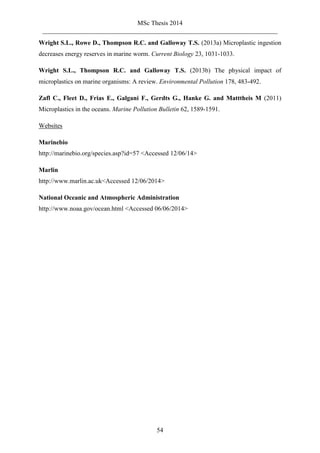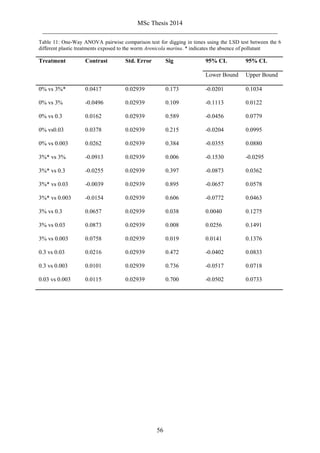This thesis investigates the effects of microplastic PVC particles and the pollutant
fluoranthene on the lugworm Arenicola marina and whether a transfer could occur through a
model food chain of mussel Mytilus edulis and dog whelk Nucella lapillus. Arenicola marina
were exposed to different PVC concentrations and pollution levels, observing impacts on
faecal casts, weight, and mortality. Mytilus edulis were then exposed to PVC and presented
to dog whelks to observe particle transfer. Results showed Arenicola marina was affected at
higher PVC levels but resilient to lower levels. Particle transfer was observed between
mus
